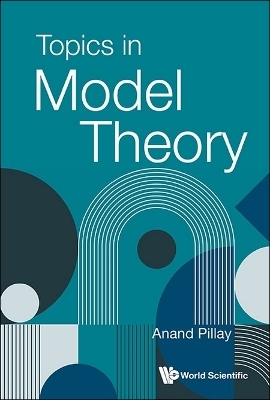
Dynamic Fuzzy Logic & its Applications
Seiten
2008
Nova Science Publishers Inc (Verlag)
978-1-60021-428-8 (ISBN)
Nova Science Publishers Inc (Verlag)
978-1-60021-428-8 (ISBN)
- Titel ist leider vergriffen;
keine Neuauflage - Artikel merken
Dynamic fuzzy problems are problems that are universally focused by academies. Mathematicians and cybernetic experts have used fuzzy logic to developed theories and solve static problems in so called subjective and objective worlds. This book introduces concepts of dynamic fuzzy logic and its applications.
Dynamic fuzzy problem are problems that are universally focused by academies. Mathematicians and cybernetic experts have used fuzzy logic to developed theories and solve static problems in so called subjective and objective worlds. This book includes 12 chapters. Chapter 1 is about basic conceptions of Dynamic Fuzzy Sets (DFS). Chapter 2 introduces Dynamic Fuzzy (DF) decomposition theorem. Chapter 3 is about L form of DFS module structure. Chapter 4 is about representation theorem of DFS. Chapter 5 introduces extension theorem of DFS. Chapter 6 is about DF measure theory. In chapter 7 it is Dynamic Fuzzy Logic (DFL). Chapter 8 is about reasoning methods of DFL. Chapter 9 is about bases of DFL programming language. Chapter 10 introduces multi-agent learning model based on DFL. Chapter 11 is about autonomic computing model based on DFL. The last Chapter introduces application of DFL in machine learning.
Dynamic fuzzy problem are problems that are universally focused by academies. Mathematicians and cybernetic experts have used fuzzy logic to developed theories and solve static problems in so called subjective and objective worlds. This book includes 12 chapters. Chapter 1 is about basic conceptions of Dynamic Fuzzy Sets (DFS). Chapter 2 introduces Dynamic Fuzzy (DF) decomposition theorem. Chapter 3 is about L form of DFS module structure. Chapter 4 is about representation theorem of DFS. Chapter 5 introduces extension theorem of DFS. Chapter 6 is about DF measure theory. In chapter 7 it is Dynamic Fuzzy Logic (DFL). Chapter 8 is about reasoning methods of DFL. Chapter 9 is about bases of DFL programming language. Chapter 10 introduces multi-agent learning model based on DFL. Chapter 11 is about autonomic computing model based on DFL. The last Chapter introduces application of DFL in machine learning.
Preface; Dynamic Fuzzy Sets (DFS); Decomposition Theorem of Dynamic Fuzzy Sets; L- Dynamic Fuzzy Sets and Module Structure; Representation Theorem of Dynamic Fuzzy Sets; Extension Theorem of Dynamic Fuzzy Sets; Dynamic Fuzzy Measure Theory; Dynamic Fuzzy Logic; Reasoning Methods of DFL; Basis of Dynamic Fuzzy Logic Programming Language; The Multi-Agent Learning Model Based on DFL; Autonomic Computing Model Based on DFL; Application of Dynamic Fuzzy Logic in Machine Learning; Index.
| Erscheint lt. Verlag | 30.5.2008 |
|---|---|
| Zusatzinfo | Illustrations |
| Verlagsort | New York |
| Sprache | englisch |
| Maße | 260 x 180 mm |
| Gewicht | 804 g |
| Themenwelt | Mathematik / Informatik ► Mathematik ► Logik / Mengenlehre |
| ISBN-10 | 1-60021-428-2 / 1600214282 |
| ISBN-13 | 978-1-60021-428-8 / 9781600214288 |
| Zustand | Neuware |
| Haben Sie eine Frage zum Produkt? |
Mehr entdecken
aus dem Bereich
aus dem Bereich
Buch | Softcover (2024)
World Scientific Publishing Co Pte Ltd (Verlag)
31,15 €
what we have that machines don't
Buch | Softcover (2024)
Profile Books Ltd (Verlag)
13,70 €
how simple questions lead us to mathematics’ deepest truths
Buch | Softcover (2024)
Profile Books Ltd (Verlag)
13,70 €


